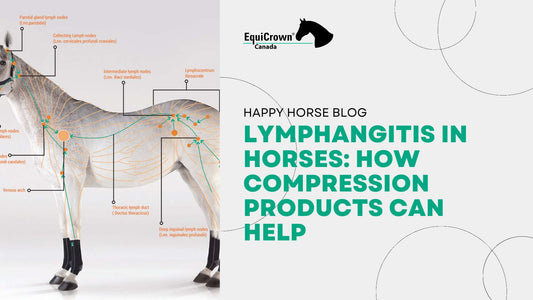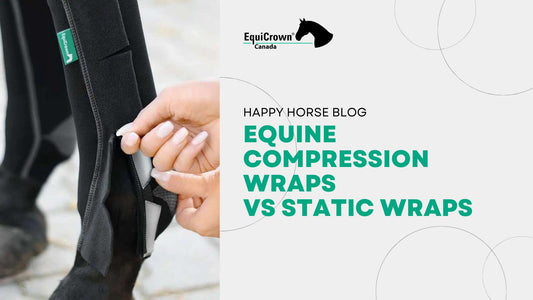
Keep Your Horse's Legs Healthy: Summary Guide to Horse Leg Protection
As a responsible equine owner, keeping your horse healthy and free from injuries should be a top priority. One of the most crucial aspects of horse health is their legs, which are prone to various injuries. In this guide, we will provide you with essential tips and information on how to keep your horse's legs healthy and protected from injury.
Font and Hind of a Horse
Front Leg
Your horse's front legs are crucial for balance, movement, and weight-bearing. One of the most common issues in the front leg is tendon and ligament injuries. To prevent these, ensure proper warm-up and cool-down routines, and provide adequate leg protection in the form of boots or bandages.
Hind Legs
The hind legs provide power and propulsion during movement. Pay attention to the hock, fetlock, and hind hoof, as these areas are prone to injury. Regular exercise, stretching, and joint supplements can help maintain the health of your horse's hind legs.
Horse Legs
Lower Limbs
The lower limb includes the cannon bone, fetlock joint, and pastern. These areas are susceptible to injury, especially in young and unbalanced horses. Regular check-ups with your veterinarian and appropriate leg protection can help keep the lower limb healthy. The lower limbs of your horse are vulnerable to damage due to the high amount of strain placed on tendons and ligaments. Monitoring your horse's limbs regularly and providing adequate support through bandages or boots is crucial. Consider incorporating a balanced exercise routine that gradually increases the intensity and duration to build strength and endurance.
Cannon Bone
The cannon bone is a weight-bearing bone between the knee and the fetlock joint. Injuries to the cannon bone can occur from trauma or repetitive stress. Provide adequate leg protection, ensure proper exercise routines, and monitor your horse's legs for any signs of swelling or discomfort.
Fetlock
The fetlock joint is located between the pastern and the cannon bone and is prone to inflammation and injuries. Use boots or bandages to support and protect this area, especially during high-impact activities like jumping or galloping.
Tendons and Ligaments
Tendons and ligaments are vital in your horse's legs, providing stability and mobility. Overstretching and tearing can lead to severe injuries and lameness. To avoid this, follow a balanced exercise regimen, use leg protection, and maintain a healthy weight for your horse.
Flexor
The flexor tendons run along the back of your horse's legs and are responsible for flexion and extension of the limbs. Injuries to the flexor tendons can lead to severe lameness. Maintain a balanced exercise routine, utilize leg protection, and ensure your horse's hooves are in good condition to prevent flexor tendon injuries.
Leg Injuries
Leg injuries are common in horses and can result from various causes, such as overexertion, poor footing, or inadequate protection. Prompt treatment and a well-structured rehabilitation plan are essential for a successful recovery. Monitor your horse's progress closely, and consult your veterinarian if you notice any signs of lameness or discomfort.
Hoof
The hoof is the foundation of your horse's legs, and its health is essential for the overall well-being of your equine friend. Regular hoof care, such as trimming and shoeing, can prevent many common problems, including hoof cracks and lameness. Also, keep your horse's environment clean and dry to avoid bacterial or fungal infections.
Keeping your Horse Legs Healthy: Leg Protection
Equine Leg Protection
Leg protection is essential to avoid muscle, tendon, and ligament injury. You can choose from various options, such as splint boots, brushing boots, and polo wraps to provide support and protection during exercise. Always consider the surface underfoot, as poor ground conditions can increase the risk of injury.
Bandage
Bandaging your horse's legs can provide support and protection during exercise or injury recovery. It's essential to use the correct technique and materials to avoid complications. Always wrap from front to back and ensure even pressure distribution to prevent circulation issues.
Horse Health: Leg Injuries
Regular check-ups with your veterinarian are crucial for maintaining your horse's leg health. They can detect potential issues early on and advise on appropriate management strategies. Keep an open line of communication with your vet and notify them of any changes in your horse's behaviour or performance.
Lameness
Lameness is one of the most common issues affecting horses and can result from various causes, including tendon injuries, joint issues, or hoof problems. Early detection and appropriate treatment are essential for successful management. Consult your veterinarian if you notice any signs of lameness in your horse.
Splint
Splints are bony enlargements inside the cannon bone, often due to trauma or inflammation. They can cause pain and lameness in affected horses. To prevent splints, use leg protection, maintain a balanced exercise routine, and ensure proper hoof care.
Feet and Legs
Riding Your Horse
The way you ride your horse can impact their leg health. Always warm up before exercise, maintain a balanced seat, and avoid overworking your horse. Also, consider incorporating regular breaks and varied training routines to reduce the risk of injury.
Young Horses
Young horses have developing musculoskeletal systems and are more prone to leg injuries. Ensure proper exercise routines, use appropriate leg protection, and consult your veterinarian for guidance on maintaining your young horse's leg health.
Older Horse
Older horses may experience wear and tear on their joints and tendons, leading to an increased risk of injury. To support your older horse's leg health, focus on low-impact exercises, proper leg protection, and joint supplements as your veterinarian recommends.
Conclusion
Taking good care of your horse's legs is essential for their overall health, performance, and well-being. Following a balanced exercise routine, using appropriate leg protection, and monitoring your horse's legs for any signs of injury or discomfort can ensure your equine companion stays healthy and happy for years.
FAQs
Q1: How can I prevent leg injuries in my horse?
A: To prevent leg injuries, ensure proper warm-up and cool-down routines, use appropriate leg protection, maintain a balanced exercise schedule, and consult your veterinarian regularly.
Q2: How often should I check my horse's legs?
A: Regularly inspect your horse's legs for signs of swelling, heat, or discomfort. This can be done daily during grooming or before and after exercise.
Q3: What type of leg protection should I use for my horse?
A: The choice of leg protection depends on your horse's needs and the type of activity. Options include splint boots, brushing boots, and polo wraps. Consult your veterinarian for specific recommendations.
Q4: How do I know if my horse is experiencing leg pain or discomfort?
A: Signs of leg pain or discomfort include limping, reluctance to move, swelling, heat, or changes in your horse's gait. If you suspect your horse is in pain, consult your veterinarian immediately.
Q5: Can proper hoof care help prevent leg injuries in my horse?
A: Yes, proper hoof care is crucial for maintaining your horse's leg health. Regular trimming, shoeing, and maintaining a clean and dry environment can prevent many common hoof problems and contribute to overall leg health.


